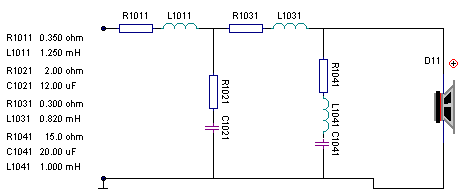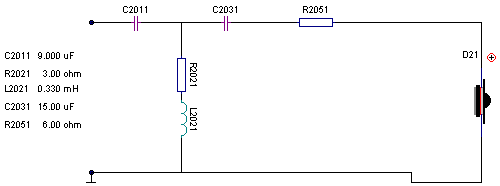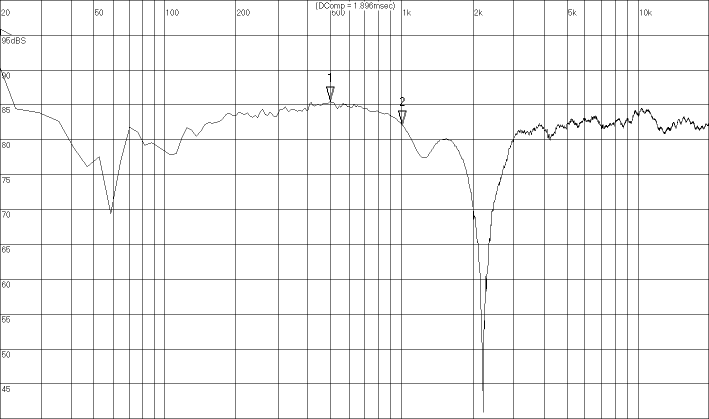|
Usher Audio offers two drivers that are closely modeled on highly respected Scan Speak drivers. The Usher T-9950 resembles the SS 9500, tweeter, and the Usher 8945 looks exactly like the SS 8545 woofer. Although the Usher drivers are not quite the bargain they were at their introductory price, a pair of each will still save you about $165 over the equivalent Scan Speak drivers ($289 vs $454). They may be ordered from: http://zalytron.com.
The 8945 provides all or most of the benefits of the 8545, and also shares a common fault -- a frequency response bump in the region of 900 hz. I have ignored this problem in my past crossovers using the 8545, but extended listening has convinced me that there are audible consequences, and I have therefore opted for a more complex crossover for the current design using the Usher drivers.
The woofer circuit uses an lcr trap filter to smooth the peak at 900 Hz, which unfortunately increases cost and crossover board size. I recommend saving some money and space by using a very high Ga 1.0 mH inductor in the circuit. For the 20 uF capacitor, a mylar would be fine, as would a Bennic NP electrolytic, for that matter.
I used a cabinet designed for my STS kit (no longer offered). The dimensions are 19" H X 10" W X 14.5" D. It has a 1.5" front baffle, with 3/4" construction on the remaining panels. The center of the tweeter is located 5.5" from the top, and offset .5" horizontally (mirror image pairs). The woofer is center mounted, and the center-to-center distance from the tweeter is 6 inches. I used a 7" X 2" port, but this could probably be improved upon.
The crossover is a Linkwitz-Riley 4th order at about 2,200 Hz. I am very pleased with the results. The speaker is very focused but not fatiguing. Bass response is excellent.
Here is the woofer low pass filter:

Remember -- any resistor with a value of less than .5 Ohms does not really exist. It merely represents the approximate DCR of the associated inductor. But all the other resistors are real. You may use either 14 Ga or 16 Ga inductors in the woofer series circuit.
And here is the tweeter circuit:

A value of 6 Ohms for the series resistor will produce the flattest response. However, feel free to experiment with a 7 or even 8 Ohm value if the highs are too bright in your room.
Here is the on-axis response:

Although the on-axis response is a little elevated at l000 Hz in relation to 1800 Hz, notice that compensating changes occur off axis.
Here are the plots 15, 30 and 45 degrees off axis:



Finally, here is the response with the tweeter connected with reverse polarity. It shows the crossover frequency of 2.2 kHz, and also demonstrates that the drivers are in phase at the crossover point when connected properly.

| 
